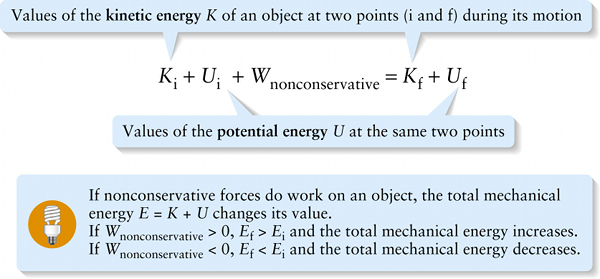Chapter 6. Change in mechanical energy when nonconservative forces act (6-26)
Question
lXazFIJws+JtMHteBxxx5Xow3gI4o5cn6eivkXcb2q9SPFakyREuBf+Na4zpXbgy0UzY2F4fJG2NknbocBlUP/3GCeNbFV8qik/ElBkvvfclOECdVJTlNfLz81jNwl+G+fArbr2PUzxKzV27Question
/oKIfyKEbVq11INyzCT5Bj03mdpvPWpBryDxUdrLL+ge1ZJujMGEtya2+VzGeOIYLaGAIwlVJHh0G+qmkODyaGSK0IxQDOne0RwW/w==Review
Equation 6-26 gives us more insight into the difference between conservative and nonconservative forces. While the pencil in Figure 6-28 is in flight—that is, during the time from when it leaves your hand to when it returns to your hand—the value of \(E = K + U\) remains the same. Kinetic energy decreases and changes into potential energy as the pencil ascends, but the potential energy is turned back into kinetic energy as the pencil falls.
